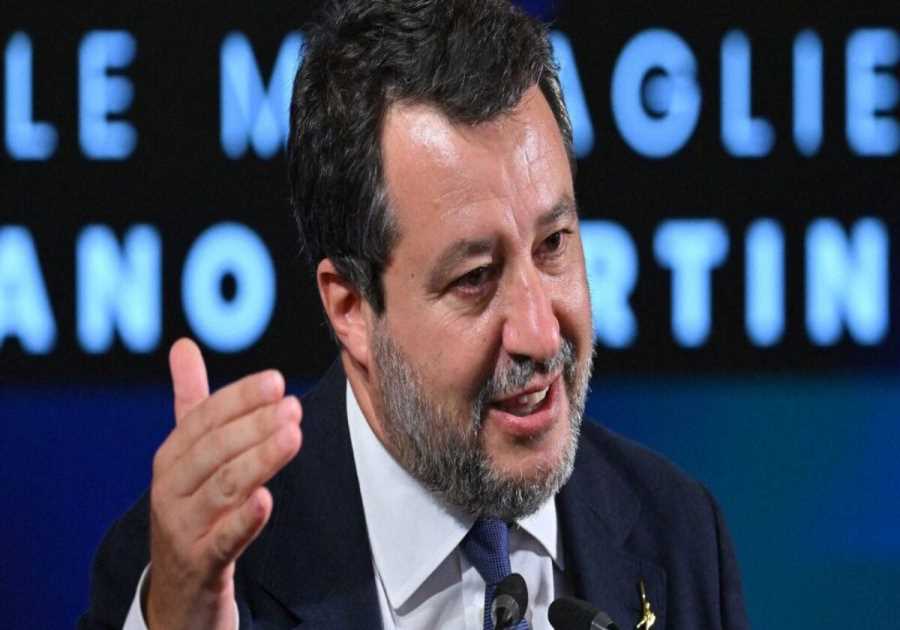Historical / Contributor / Getty Images
- Hydrogen bombs and atomic bombs are both nuclear weapons that can cause mass destruction.
- Most US nuclear weapons today were made in the 1950s and 1960s and are H-bombs.
- H-bombs are more powerful, flexible, and cleaner than a-bombs but they're also more complex to make.
The atomic bombs dropped by the United States on Japan in 1945 remain the only nuclear weapons ever used in warfare.
But just seven years later an even more destructive nuclear bomb was built — the hydrogen bomb.
Each type of nuclear weapon's enormous power can be explained via Einstein's famous equation E=mc2, which signifies that mass and energy are exponentially equivalent.
In both types of bombs, a very small amount of mass is transformed into a very large amount of energy — but atomic and hydrogen bombs get their power through different means.
Here are the differences between atomic and hydrogen bombs.
It all starts with nuclear fission
Atomic bombs are powered solely by nuclear fission — the splitting of atoms. Whereas hydrogen bombs get their power from a combination of fission and its opposite — nuclear fusion — the binding of atoms.
To develop a workable hydrogen bomb, mastering fission had to come first.
Fission was first discovered in 1938. Two chemists, Otto Hahn and Fritz Strassman, bombarded uranium with neutron particles and found that it produced an entirely different, lighter element, barium.
Puzzled at their results, Hahn consulted former colleague Lisa Meitner, who along with her nephew Otto Frisch concluded that uranium might become unstable and break apart into two, lighter pieces when hit by a neutron. This was a revelation since scientists up to that point had thought the process would produce heavier elements, not lighter ones.
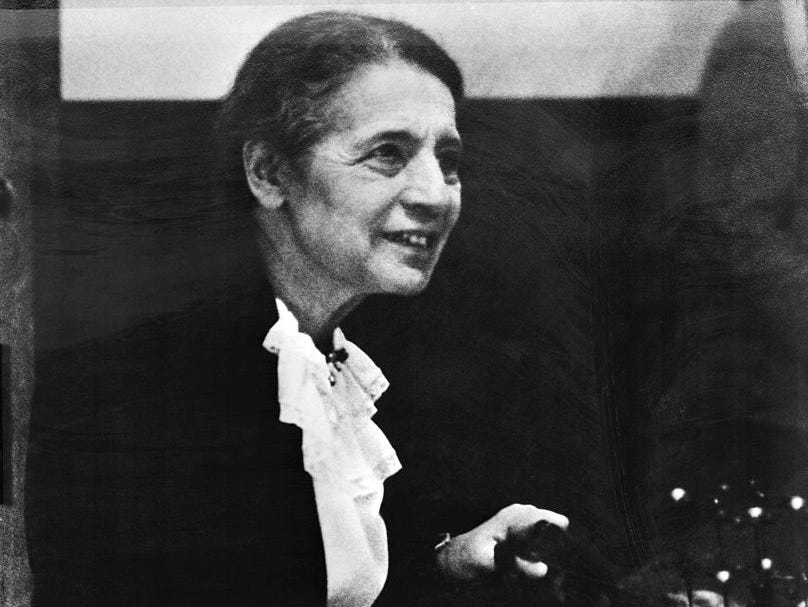
Bettmann / Contributor
The lighter pieces, called fission fragments, can be a number of different elements, including barium — or more dangerous isotopes like strontium-90 and cesium-137.
Meitner and Frisch also calculated the fission reaction could produce a large amount of energy — about 200 million electron volts (MeV) per uranium atom — dwarfing the 5 eV per atom produced by the most powerful chemical reactions at the time.
But where did the energy come from? Meitner calculated that when a uranium atom split into two atoms, they weighed slightly less together than the original uranium atom. The missing mass had been converted to pure energy — just as Einstein's equation predicts.
Hydrogen vs. atomic bombs: how they work
The first atomic bomb detonated for the Trinity test and the bomb dropped over Nagasaki used plutonium for fuel. Whereas the atomic bomb dropped over Hiroshima, nicknamed "Little Boy," used uranium as fuel for its fission reaction.
A simple uranium fission bomb is much easier to make than a hydrogen bomb or even a plutonium fission bomb, according to Alex Wellerstein, a nuclear weapons historian and professor at the Stevens Institute of Technology.
"My engineering students could probably do it if they had highly enriched uranium, like the Little Boy bomb — that is dead simple," Wellerstein said.
In the case of Little Boy, two separate cores of uranium were shot into each other by a conventional explosive. When the cores hit each other, it generated a chain reaction of neutrons firing, splitting billions of uranium atoms one after the other, triggering an enormous explosion.
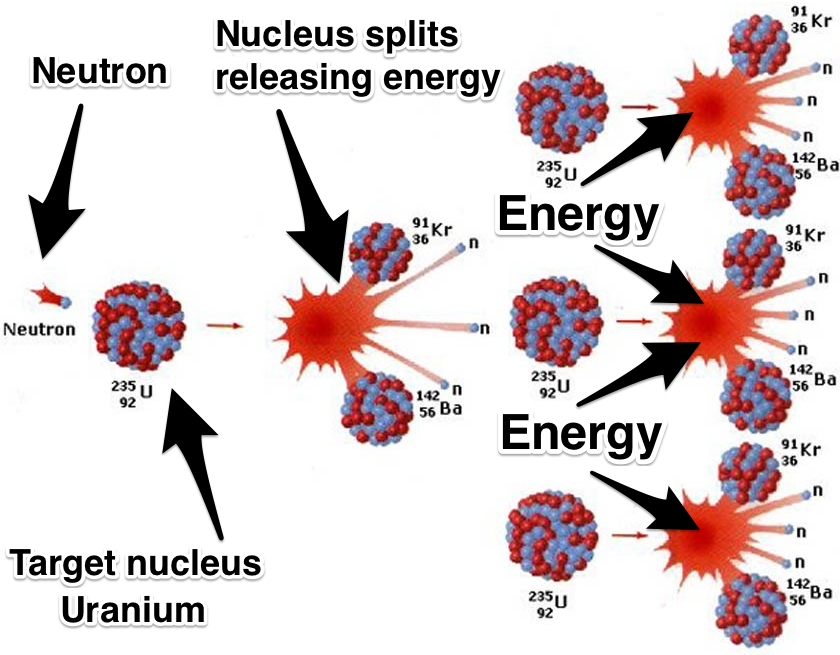
Screen grab/Amanda Macias/Business Insider
The plutonium-powered bomb, "Fat Man," worked differently. A spherical core of plutonium was surrounded by explosives which, when fired, increased the density in the plutonium core to generate a similar chain-reaction of atom splitting and subsequent explosion.
Hydrogen bombs, also known as thermonuclear bombs, are a bit more complicated than atomic bombs — they typically use two "stages," to produce their power, through a combination of fission and fusion.
The first stage consists of a fission bomb with a core or "pit" made of plutonium or uranium, surrounded by conventional explosives, much like the original atomic bombs.
But this bomb within a bomb is "boosted" by adding hydrogen gas to the center of the core, making the fission explosion more powerful. That enormous power is essential to igniting fusion in the second stage.
In the secondary stage, X-rays from the primary fission explosion ignite the fusion fuel, consisting of lithium deuteride. Tritium is produced in the reaction.
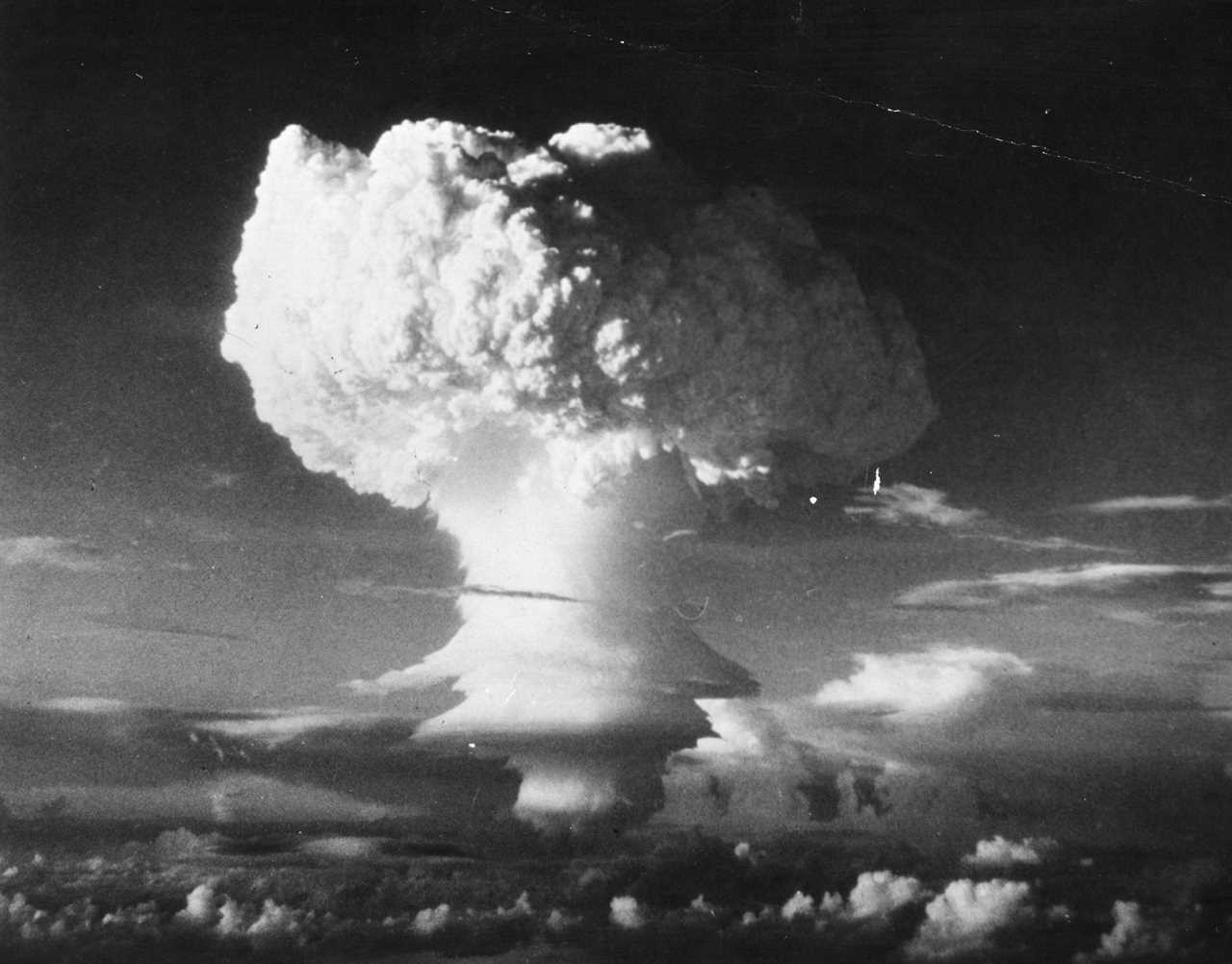
Three Lions/Getty Images
The tritium then fuses with deuterium from the lithium deuteride, releasing neutrons and energy in the process.
In the center of the fusion fuel is a uranium or plutonium "spark plug," that starts to fission due to the extreme heat and pressure — heating the hydrogen from inside and creating more fusion reactions.
The neutrons released by the fusion reaction then go on to slam into a layer of uranium that surrounds the fusion fuel, triggering even more fission reactions.
All these nuclear reactions happen in the blink of an eye, with fission and fusion each contributing about half of the total explosive power in a typical H-bomb — which can be up to 1,000 times more than atomic bombs.
Hydrogen vs. atomic bombs: damage and destruction
While atomic bomb blasts are measured in kilotons — 1 kt is equivalent to the explosive force of 1,000 tons of TNT — hydrogen bombs are often measured in megatons. One Mt is equivalent to 1,000,000 tons of TNT.
The Little Boy atomic bomb dropped over Hiroshima contained 140 pounds of uranium and produced a blast of 15 kt. The "Fat Man" bomb dropped over Nagasaki contained about 13 pounds of plutonium to produce a 21 kt blast.
The largest US thermonuclear bomb ever tested, Castle Bravo, produced a 15 Mt explosion — a whopping 1,000 times more powerful than the atomic bomb dropped over Hiroshima.
And the most powerful thermonuclear bomb ever — the Tsar Bomb, detonated by the Soviet Union — was 50 Mt.
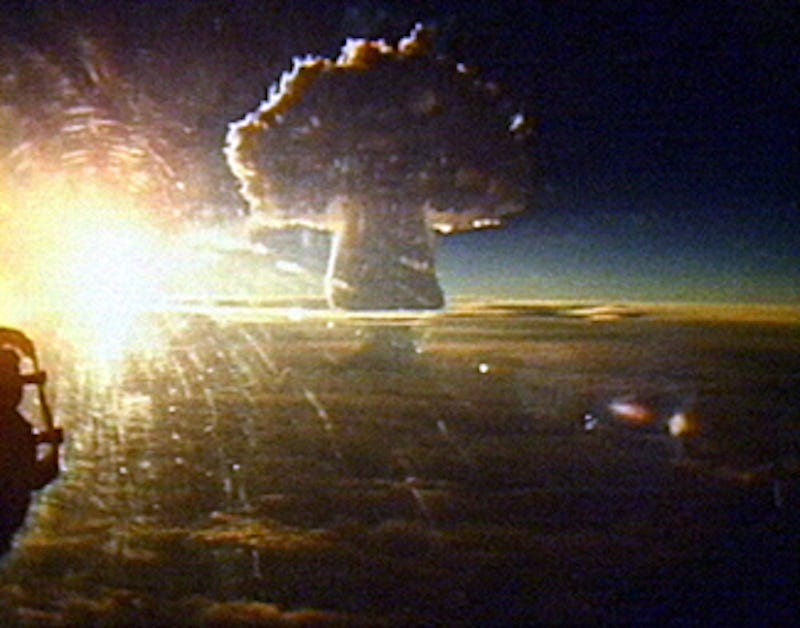
Minatom/Wikiepdia
Some US nuclear weapons are considered "low-yield," including a submarine-based nuclear warhead with a yield of 5 kt, while the most powerful bomb in the current US arsenal, the B83, has a yield of about 1.2 Mt.
The energy from a nuclear weapon can be broken down like this: 50% comes from the blast, 35% from heat, and 15% from nuclear radiation.
How far the effects of the blast go depends on the size of the bomb, but to put it in perspective — a 1 Mt explosion could create a one-mile diameter fireball brighter than the sun within 10 seconds, vaporizing everything within it. Even 20 miles away, the heat from the explosion could be enough to burn people and ignite fires.
Both atomic and hydrogen bombs are nuclear weapons and therefore create long-lasting, dangerous nuclear fallout.
Interestingly, though, fallout only comes from fission: "The intensity of your fallout is always going to be directly, linearly related to how much of the yield is from fission," Wellerstein said.
Fusion doesn't actually create fallout. For example, the Tsar bomb was one of the cleanest nuclear weapons ever detonated, Wellerstein said, because its explosive force came from 97% fusion.
The cost of nuclear weapons
The Manhattan Project's research, development, and production of atomic bombs cost an estimated 39 billion in 2023 US dollars to produce four atomic bombs — one tested, two dropped, and one unused.
But the atomic bombs were a bargain compared to the nuclear budget since then. Between 1940 and 1996, the US' nuclear weapons program cost an estimated 11.4 trillion in 2023 US dollars.
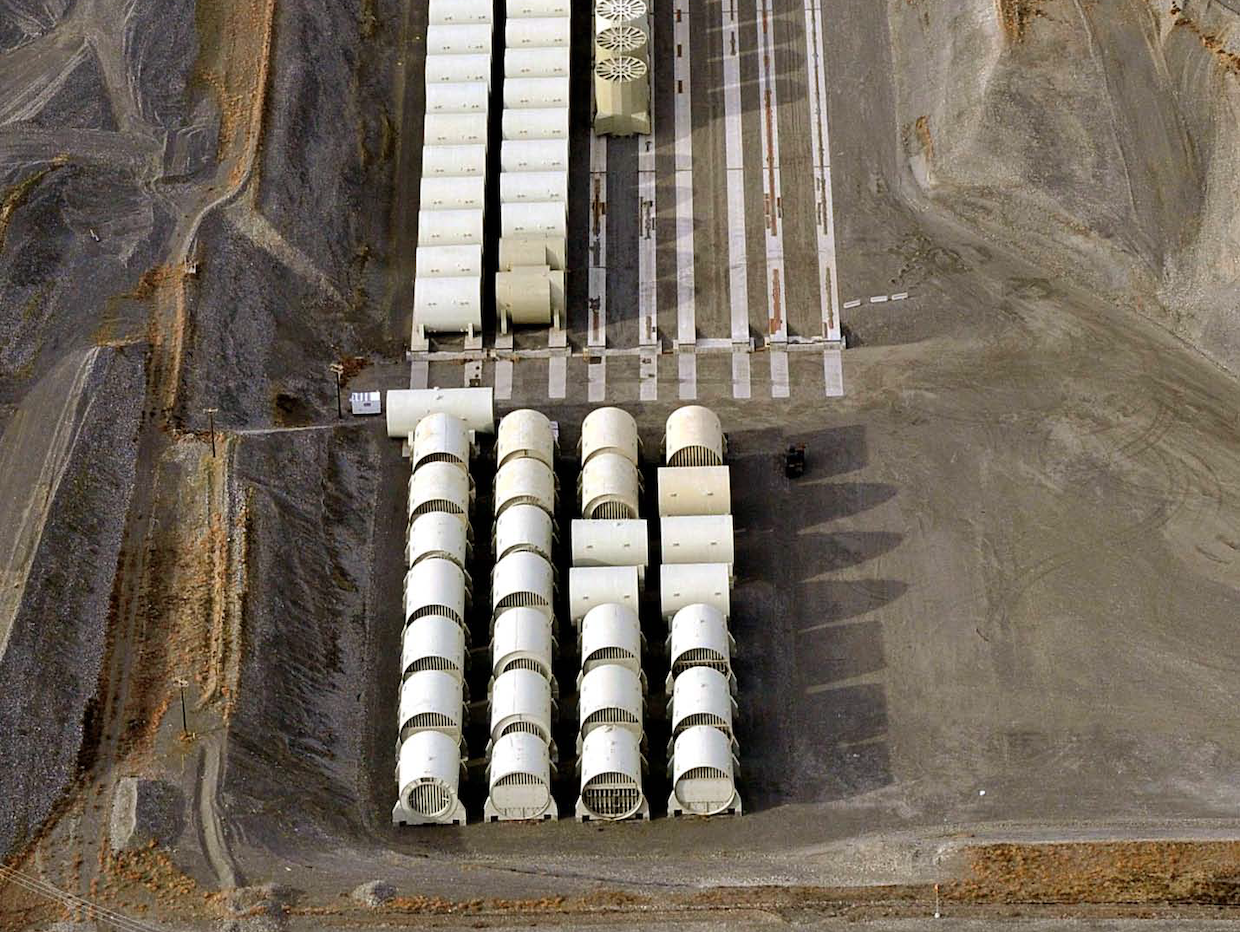
Department of the Navy
However, just 7% of that cost went to actually developing, building, and testing the bombs and warheads — more than 70,000 of them in all. The rest of the budget went to deployment systems in vehicles like aircraft and submarines, command, communications, and intelligence systems involved in nuclear weapons, and for defense against nuclear attacks.
Most nuclear weapons in the US were made during the 1950s and 1960s, with production ending in 1990. Today, the US' nuclear weapon stockpile is approximately 3,700 — reduced significantly from its high of 31,255 in 1967.
Efforts focus on maintaining the stockpile and updating or refurbishing parts — for example, by replacing plutonium pits.
The estimated cost of a program to completely refurbish about 460 B61 nuclear bombs over the next 20 years is between $11.5 billion and $13 billion. If you divide that cost into 460 bombs, that comes out to about $26 million per bomb.
And the projected overall cost of the US nuclear forces from 2023-2032 is $756 billion.
Why today's nuclear arsenals are mostly hydrogen bombs
Although fission bombs are relatively simple to make, thermonuclear weapons quickly replaced them in nuclear arsenals.
"A thermonuclear weapon is much more flexible in terms of what you can do with it than a fission bomb alone, and it's also just much more compact in terms of the energy you're getting out of it," Wellerstein said.
"What you're really concerned with if you're using a nuclear warhead is how do I get it to the target? How do I get whatever amount of firepower I want from point A to point B? And so you're going to pick the option that allows you to do that with the smallest volume, the smallest weight, and the biggest sort of outcome from that," he added.
Read More
By: [email protected] (Adam Barnes)
Title: How hydrogen bombs compare to atomic bombs, and how scientists created the most destructive weapon ever
Sourced From: www.businessinsider.com/hydrogen-bomb-vs-atomic-bomb-what-is-the-difference-2023-9
Published Date: Sun, 24 Sep 2023 09:18:01 +0000
Did you miss our previous article...
https://trendinginbusiness.business/politcal/ukraine-kits-out-kayaks-with-grenade-launchers-optimized-for-covert-military-operations-report-says
.png)

